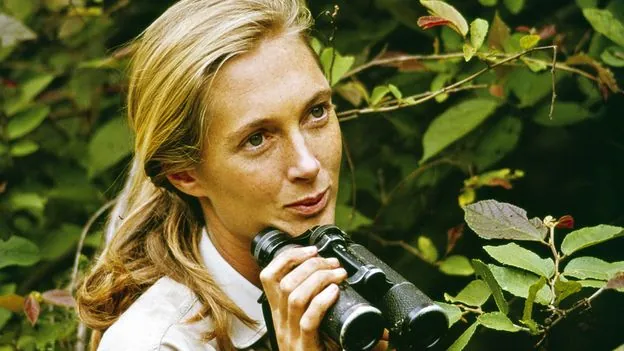
How Jane Goodall Redefined Our Understanding of Chimps—and Humanity
2025-07-14
Author: Lok
A Revolutionary Journey Begins
On July 14, 1960, a young English woman without formal scientific credentials arrived at the Gombe Stream Game Reserve in Tanzania, setting off a groundbreaking study of wild chimpanzees. Jane Goodall’s work would ultimately transform not just our understanding of animal behavior but also reshape our perception of humanity itself.
Dreams of a Girl Who Loved Nature
At just 26, Goodall had long held a passion for animals, cultivating her fascination since childhood—stepping from observing insects to envisioning a life in Africa. Inspired by stories like Dr. Dolittle, she was determined to immerse herself in the animal kingdom.
A Lucky Encounter with a Mentor
After finishing school, Goodall worked multiple jobs to save for her dream trip to Africa. In 1957, her journey led her to a meeting with renowned paleoanthropologist Professor Louis Leakey, who, impressed by her self-taught knowledge and passion, hired her as his assistant at the natural history museum. Leakey saw potential in Goodall's lack of formal training, believing it would allow her observations to remain free from preconceived scientific notions.
The Challenges of the Jungle
Initially, Goodall faced tough conditions at Gombe. Accompanied by her mother due to colonial safety regulations, both fell ill with malaria, making the task at hand even more daunting. But after gaining the trust of the local fauna, she began to observe the chimpanzees up close.
A Unique Bond with the Chimps
Using patience and anonymity—dressing in similar colors and avoiding pursuit—she slowly built a relationship with the chimps. This approach unveiled not just their feeding habits but their intricate social structures, showcasing family bonds and individual personalities.
Tool Use: A Game-Changer in Understanding Intelligence
One of Goodall's landmark discoveries was observing chimps using tools—an activity previously believed to be unique to humans. From creating termite-fishing tools out of twigs to using stones for cracking open nuts, these findings prompted a significant shift in how we perceive intelligence across species.
Mirror to Humanity
Through her observations, Goodall noted astonishing similarities between chimps and humans. Their expressions of affection, such as holding hands and kissing after separations, raised questions about our own parenting styles and emotional connections. She cautioned that neglect in upbringing might impact a child’s later ability to form intimate relationships.
The Darker Side of Primates
Goodall also revealed a darker reality: that while chimps display warm social traits, they are capable of aggression, including behaviors akin to human warfare and cannibalism under certain conditions. This duality painted a complex picture of our closest animal relatives.
A PhD and Public Recognition
Encouraged by Leakey, Goodall began her PhD in 1962, despite not having an undergraduate degree. Her groundbreaking work gained broader recognition through a National Geographic documentary, paving the way for her discoveries to reach a wider audience.
Connecting Humanity and Chimps
Goodall’s research highlighted the genetic closeness between humans and chimpanzees, sharing approximately 98.6% of DNA. She posited that behaviors exhibited today were likely present in our common ancestors, fostering a deeper understanding of who we are.
Legacy of Insight and Understanding
Through her tireless efforts, Jane Goodall not only changed the field of primatology but challenged humanity to reflect on its own nature. She established that we are not separate from the animal kingdom and that our behaviors are interconnected with our primate relatives. By embracing the similarities and differences, Goodall encourages us to consider our role and responsibility towards other species.



 Brasil (PT)
Brasil (PT)
 Canada (EN)
Canada (EN)
 Chile (ES)
Chile (ES)
 Česko (CS)
Česko (CS)
 대한민국 (KO)
대한민국 (KO)
 España (ES)
España (ES)
 France (FR)
France (FR)
 Hong Kong (EN)
Hong Kong (EN)
 Italia (IT)
Italia (IT)
 日本 (JA)
日本 (JA)
 Magyarország (HU)
Magyarország (HU)
 Norge (NO)
Norge (NO)
 Polska (PL)
Polska (PL)
 Schweiz (DE)
Schweiz (DE)
 Singapore (EN)
Singapore (EN)
 Sverige (SV)
Sverige (SV)
 Suomi (FI)
Suomi (FI)
 Türkiye (TR)
Türkiye (TR)
 الإمارات العربية المتحدة (AR)
الإمارات العربية المتحدة (AR)